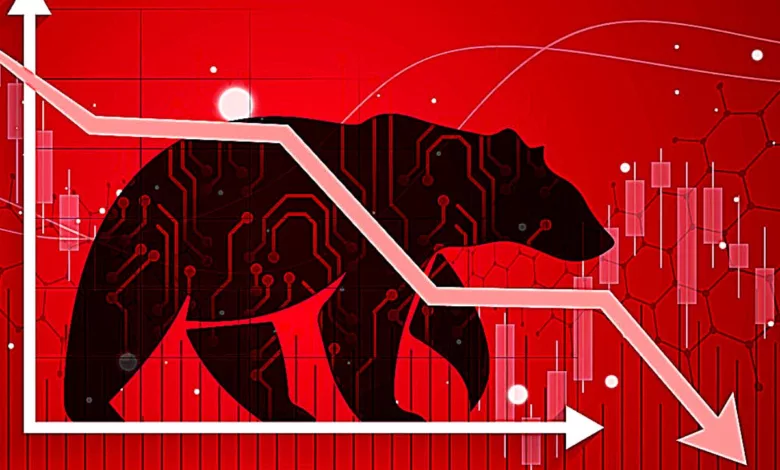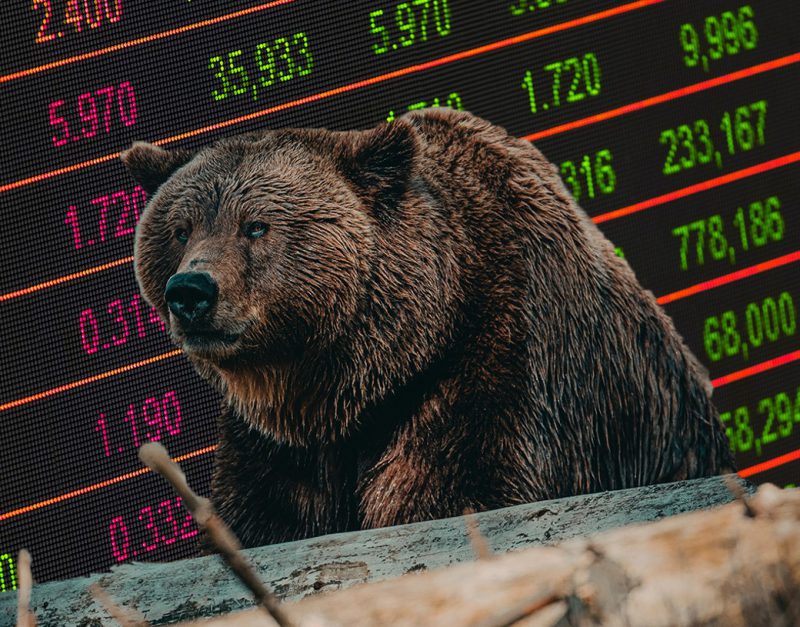Market Breakdown As Investors Lose Nearly ₹10 Lakh Crores After Sensex And Nifty Fell For The 4th Consecutive Session.
Three US banks have failed in less than a week, but Silicon Valley Bank (SVB), which was the country's 16th-largest bank at the end of 2022, has surprised the market.

The Sensex and Nifty closed in the red for the fourth consecutive session recently because the fears of a spillover effect from Silicon Valley Bank’s failure continued to weigh on market sentiments. In only a single day, investors witnessed a drastic loss of ₹2 lakh crore in domestic equities. The Sensex and Nifty have lost 4% each in the last four sessions, while the overall market capitalization of BSE-listed companies has fallen to 256.39 lakh crore from 266.24 lakh crore, leaving investors 9.85 lakh crore worse off.
Why did the market collapse?
After the SVB collapse and a global rate-hike regime, concerns over the viability of banks have grown in recent days. An index of credit risk in the banking system of the euro area increased to its highest level since mid-July as investor fears about the effects of rising interest rates on the banking industry were exacerbated by concerns about the danger of contagion following the failure of two US banks.

Three US banks have failed in less than a week, but Silicon Valley Bank (SVB), which was the country’s 16th-largest bank at the end of 2022, has surprised the markets. The biggest lender to fail since 2008 is SVB. In the meanwhile, a rise is anticipated in February’s US consumer pricing statistics. This was another element that affected the mood of the market.
Except for a few minutes of gains, the Sensex closed the day in the red, losing 0.58 percent(338 points), to end at 57,900.19, while the Nifty ended at 17,043.30, down 0.65 percent (111 points). The BSE Smallcap index ended the day down 0.84 percent and the BSE Midcap index dropped 0.46 percent.
In the course of intraday trading on the BSE, 338 equities, reached their 52-week lows which include the following.
- Reliance Industries.
- Bandhan Bank.
- Cipla, Divi’s Laboratories.
- HDFC Life Insurance Company.
- ICICI Lombard General Insurance Company.
- ICICI Prudential Life Insurance Company.
- Info Edge.
- Mphasis.
Also, in a slow market, the price of crude oil dropped by more than 2%.
- Brent Oil was trading at about $79 per barrel.
- The rupee decreased 36 paise to end the day at 82.49 to the dollar.

Top Nifty gainers.
- Titan.
- BPCL.
- Larsen & Toubro.
Top Nifty losers.
- Adani Enterprises.
- Adani Ports.
- Mahindra and Mahindra.
The 50 Nifty stocks had up to 38 equities that concluded in the red.
Industrial indices.
Given how comprehensive the market selloff was, many sectoral indexes ended in the red. The biggest losers were the following.
- Nifty PSU Bank- 1.90 percent.
- Nifty IT- 1.65 percent.
- Metal- 1.22 percent.
- Auto, property, oil & gas, consumer durables, FMCG, and financial services- 1-5 percent.
- Nifty Bank ended bearing a 0.39 percent loss.
Head of Research at Geojit Financial Services, Vinod Nair’s views on markets.
Mr. Nair noticed that the selling continued as the extent of uncertainty revolving around the US Banks was diminished due to supporting measures made by the US Fed. High-interest rates, according to Nair, are the fundamental problem facing the market and will continue to devastate the global economy.
Because of the hawkish monetary policy and rising inflation, yields will take some time to stabilize in the long-term trend. The weakening economy and the turmoil in US banks, however, have given rise to a notion that rates will peak soon, supported by a shift in monetary policy from hawkish to neutral, which will ease the concerns of long-term investors.
Technical market opinions from Jatin Gedia, a technical research analyst at Sharekhan by BNP Paribas.
According to Mr. Gedia, the Nifty has corrected by almost 800 points during this time, making a relief rally unlikely. Given that the lower Bollinger band is growing and the momentum indicator has a negative crossover, which is a sell signal, Gedia noted that the collapse is likely to continue.
The preferred trading method for Nifty would be to sell on the rise in the region of 17,150–17,200. On the downside, he anticipates that Nifty will aim for levels around 16,950, which mark the lower boundary of the channel. On the upside, a short-term obstacle zone should work between 17,380 and 17,400, which is where the 40-hour moving average is situated.

The ending words signify the drastic effect of SVB’s fall.
Where a large number of investors were coping with the loss of Adani equities activated by the Hindenburg research report, there come other waves of losses resulting from the SVB collapse. Will all these situations be a sign of a future market bloodbath? Or is this series of losses just temporary and going to end soon? Let’s see what happens in the upcoming months of 2023.




